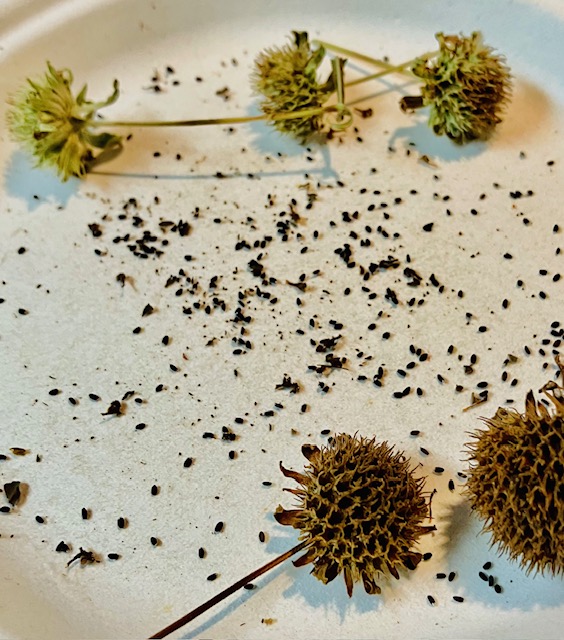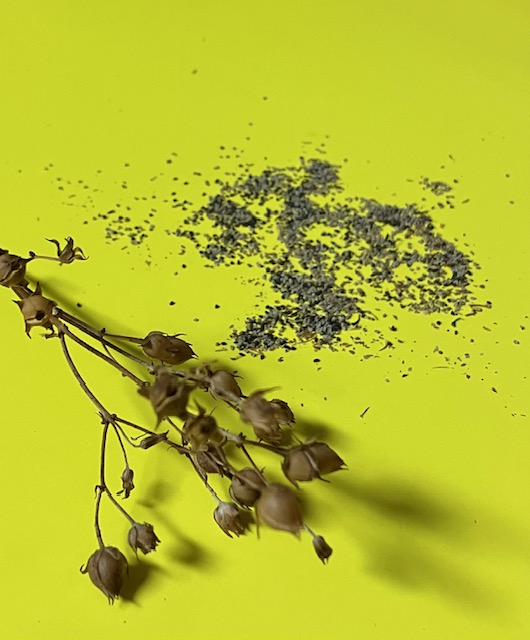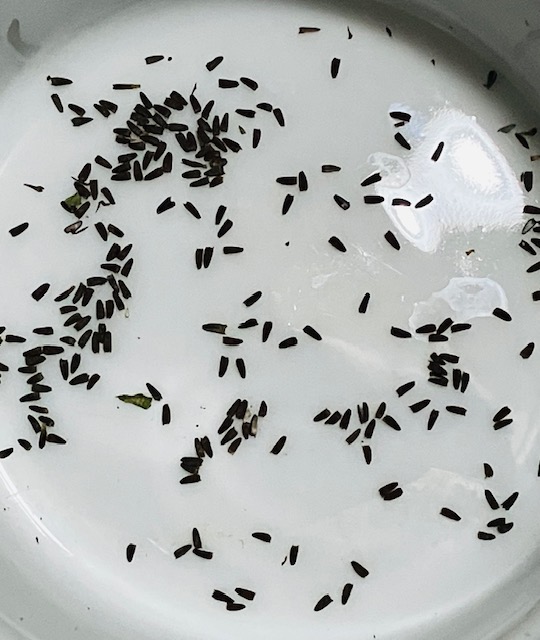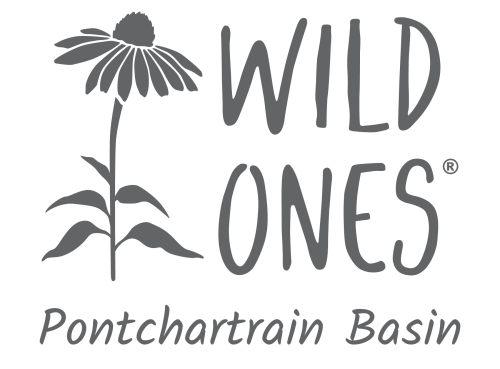Wild Ones Pontchartrain Basin Chapter provides this list alphabetically, as a community service and for information only. No business is recommended. WOPB recommends that consumers do their own research prior to purchasing native plant materials. WOPB does recommend prioritizing locally sourced native species as they provide the greatest ecological services to local wildlife. Identify species by their scientific name. If plants tags include additional names in parentheses, they are likely nativars or cultivars.
In this page:
- Regional Native Plant Nurseries
- Regional Native Seed Sources
- Helpful websites to verify species are native
- Sustainable and Ethical Seed Collecting Protocol
Regional Native Plant Nurseries
| Almost Eden Plants | |
|---|---|
| Website | https://almostedenplants.com |
| [email protected] | |
| Phone | (337) 375-2114 |
| Location | 1240 Smith Rd, Merryville, LA, 70653-5608 |
| Special Notes: | – Dr. C. Allen’s daughter (Dawn Mc Millian of Wild Ones Western Coastal Plains Chapter) – Online Only |
| Backhouse Garden, LLC | |
|---|---|
| https://facebook.com/backhousegarden | |
| [email protected] | |
| Phone | (985) 285 5008 |
| Location | 40 James Jarrell Rd, Carriere, MS, 39426 |
| Special Notes: | – 80% natives from seed and plugs. Some vegetables and herbs. – No pesticide or herbicide – Thursday thru Saturday, 10 to 4 – Call for an appointment |
| Banting Nursery Northshore | ||
|---|---|---|
| Website | https://bantingsnursery.com | |
| [email protected] | ||
| Phone | (985) 882-5550 | |
| Location | 26300 Highway 190, Lacombe, LA 70445 | |
| https://www.facebook.com/bantingsnurserynorthshore | ||
| Special Notes: | – Lilly Barrantes – Manager, W.O. Pontchartrain Basin Member – Lilly, the manager, is motivated to stock more natives, despite carrying mostly nonnatives currently. |
| BaumGardens | ||
|---|---|---|
| Website | https://www.baumgardens.com/the-plants | |
| [email protected] | ||
| Phone | ||
| Location | Old Jefferson, New Orleans; delivery sometimes available to North Shore | |
| Special Notes: | – Purchases are by appointment. Please email to arrange. – Over 100 species, mostly herbaceous, but some trees and shrubs. – Mostly seed-grown local ecotype, some superior cultivars and varieties. |
| Beaver’s Abundance Native Plant Nursery | |
|---|---|
| Website | https://beaversabundance.com/ |
| https://www.facebook.com/beaversabundance | |
| Phone | (225) 610-4220 |
| Location | 17873 Old Jefferson Hwy, Prairieville, LA, 70769 |
| Special Notes: | – Specializes in Natives – Monthly scheduled public sales. – Get on email list through website. |
| Crosby Arboretum | |
|---|---|
| Website | http://www.crosbyarboretum.msstate.edu/ |
| https://www.facebook.com/CrosbyArboretum | |
| Phone | (601) 799-2311 |
| Location | 370 Ridge Road, Picayune, MS 39466 |
| Special Notes: | – Wednesday to Sunday, 9 AM to 4:30PM. – Some plants available for sale typically. – Periodic large seasonal sales, with some plants often available on the deck during regular hours. – Mostly cultivated natives, with increasing availability of locally sourced natives. |
| Delta Flora Native Plants | |
|---|---|
| Website | https://www.deltafloranativeplants.com/visit-the-nursery |
| [email protected] | |
| https://www.facebook.com/search/top/?q=delta%20flora%20native%20plants | |
| Location | 2710 Touro St., New Orleans, 70119 |
| Special Notes: | – Open by appointment only. |
| Full Moon Gardens Nursery | |
|---|---|
| https://www.facebook.com/FullMoonGardensNursery/ | |
| [email protected] | |
| Phone | (985) 809-5010 |
| Address | 71344 Highway 59, Abita Springs, LA. |
| Special Notes: | – Primarily non-natives. Carries some cultivated natives. |
| Garden Spot of Mandeville | |
|---|---|
| Website | https://www.thegardenspotofmandeville.com/ |
| [email protected] | |
| Phone | (985) 674-0252 |
| Location | 2110 9th St. Mandeville LA 70471 |
| Facebook: | https://www.facebook.com/gardenspotofmandeville/ |
| Greauxing Wild, Native Plants for Habitat Gardens | |
|---|---|
| https://www.facebook.com/greauxingwild | |
| [email protected] | |
| Location | Baton Rouge |
| Special Notes: | – Janine Kharey – owner, Wild One Greater Baton Rouge Chapter President – Specializes in locally sourced natives |
| Hilltop Arboretum | |
|---|---|
| Website | https://www.lsu.edu/hilltop/index.php |
| [email protected] | |
| Phone | (225) 767-6916 |
| Location | 11855 Highland Road, Baton Rouge LA 70810 |
| https://www.facebook.com/LSUHilltopArboretum | |
| Special Notes: | – Periodic seasonal sales |
| Jefferson Feed, Pet & Garden Center | |
|---|---|
| Website | https://www.jeffersonfeed.com |
| Phone | (504) 733-8572 |
| Location | 4421 Jefferson Hwy, Jefferson, LA, 70121 |
| Special Notes: | – Carries some cultivated natives |
| Native Plant Initiative of Greater New Orleans (NPI-GNO) | |
|---|---|
| Website | https://www.npi-gno.org/ |
| [email protected] | |
| https://www.facebook.com/npigno | |
| Special Notes: | – Southshore with frequent FREE plant giveaways |
| Pelican Greenhouse (New Orleans City Park) | ||
|---|---|---|
| Website | https://neworleanscitypark.org/visit-city-park/pelican-greenhouse/ | |
| [email protected] | ||
| Phone | (504) 483-9437 | |
| https://www.facebook.com/search/top/?q=pelican%20greenhouse | ||
| Location | 2 Celebration Drive, New Orleans, LA, 70124 | |
| Special Notes: | – Periodic seasonal sales, 9am–Noon. |
| Remnant Roots Nursery | ||
|---|---|---|
| Website | ||
| [email protected] | ||
| Phone | ||
| Location | Smithdale, MS, 39601 (not currently open to the public) | |
| Special Notes: | -Brady Dunaway, owner -Local genetics native plants -Brookhaven, MS Farmer’s Market, Friday mornings 8-noon |
| Saint Tammany Master Gardeners | |
|---|---|
| Website | https://www.stmastergardener.org/ |
| [email protected] | |
| https://www.facebook.com/STMGA/ | |
| Location | Covington Fairgrounds, 1301 N. Florida St., in Covington |
| Special Notes: | – Annual Event: Northshore Garden Show and Plant Sale at the St. Tammany Parish – 2025 Spring dates are 3/28 & 3/2.Hours from 9 a.m. to 4 pm; $5 gate fee for people over 18 yrs. – Various vendors – mostly non-native but some native vendors |
| The Boho Being | |
|---|---|
| Website | https://thebohobeingstore.com/ |
| [email protected] | |
| Phone | (985) 707-1623 |
| Location | 1184 Front Street Slidell, LA 70458 |
| Special Notes: | – Linda March – owner |
Regional Native Seed Sources
| Louisiana Native Seed | |
|---|---|
| Website | https://louisiananativeseed.com |
| [email protected] | |
| Special Notes: | – Steve Levitt – owner |
| Meadow Makers | |
|---|---|
| Website | https://marcpastorek.com/native-louisiana-and-mississippi-prairie-meadow-seed/ |
| Special Notes: | – Marc Pastor – owner |
| Roundstone Native Seed | |
|---|---|
| Website | https://roundstoneseed.com |
| Special Notes: | – Kentucky |
Helpful websites to verify species are native
| Lady Bird Johnson Wildflower Center | |
|---|---|
| Website | https://www.wildflower.org/plants/ |
| Special Notes: | – This site lists only natives – but natives for the whole US. |
| USGA Guide to the Plants of Louisiana | |
|---|---|
| Website | https://warcapps.usgs.gov/PlantID |
| Special Notes: | This site lists both natives and non-natives for Louisiana only. |
Sustainable and Ethical Seed Collecting Protocol
Seed collecting is an inexpensive and fun way to increase the number of natives in our yards. But like anything in life, collecting seeds in the wild has some guidelines that must be followed to keep all plant populations safe and healthy.
Here are a few questions to consider before you collect:
I. For what purpose are you collecting?
- Are you collecting to add species to your yard?
- Do you wish to share seed with others or organizations?
- Do you intend to use the seed as soon as possible as most seed expires after a few years?
- Is the plant population from which you are collecting in imminent danger of destruction?
- How much seed do you actually need?
II. Why does my purpose for collecting matter?
- Too many of our local ecosystems are fractured and are no longer resilient.
- Consider that others are also out collecting seeds from the same population.
- Taking more seed than you really need endangers plant populations, hurts the wildlife which relies on these seeds for food,
- And most important, it breaks the “cardinal rule” of seed collection by the North American Native Plant Society.
North American Native Plant Society “cardinal rules” or guidelines
The NANPS states, “Take no more than 10% of the available seeds. If there are signs that
someone else has already collected (trampled grass, stripped or removed seed heads) you
should not take any more.”
The NANPS website continues, “Never collect seed from rare species. (plants with status
G1 and G2, as ranked globally and sub-nationally in a methodology developed by The
Nature Conservancy) except as part of an authorized species recovery program approved by
the appropriate government regulatory body. Seed from G3, S1 and S2 status plants should
only be collected when they are to be used to establish a regenerating seed source for future
seed production and not for direct commercial sale of the wild collected seed itself.”
The above guidelines, therefore, require that you:
- Make sure you have permission (a permit) to collect seeds first on public lands. National
Park Service (Barataria Preserve), National Wildlife Refuge system (Big Branch, Bayou
Sauvage, etc.), and state wildlife management areas (Pearl River, Lake Ramsey, Sandy
Hollow). - Never collect on Nature Conservancy properties (Lake Ramsey, Abita Creek Flatwoods) without a permit
- Never collect in state parks (Fountainbleu, Bogue Chitto) without a permit.
III. General guidelines of seed collecting
First, before collecting seed, check local nurseries to find the plant first, or ask other native
gardeners if they already have seed they can share.
Always be familiar with what is a native plant as opposed to a non-native so that no exotics are
introduced into the landscape.
Be sure to know the time at which seed heads turn brown and “crispy.” Never collect green
seeds that clearly are not ripe. Often, the seed heads will easily release seeds when they are
ripe.
IV. Plant removal from the wild
Plants in the wild can be dug up ONLY if they are in immediate danger of destruction due to
development. Fearing immediate danger and knowing there is immediate danger are two
different issues.
Digging up plants further degrades the fragile existent habitat. It also removes plants that can be
used by wildlife.



